Aluminum is an essential raw material for a wide range of industries, with aluminum ingots serving as the foundation for many end-products, including electrical cables, automotive components, packaging, and aerospace materials. Among these, cable manufacturers are particularly dependent on aluminum ingots, as they are used to produce aluminum conductors for power transmission, telecommunications, and other electrical applications. However, the global aluminum ingot market is deeply affected by trade policies, tariffs, and international trade flows, which can have significant impacts on supply chains, pricing, and the overall competitiveness of aluminum-based products. This article will examine the current state of the global aluminum ingot market, the effects of trade policies and tariffs, and how these factors influence cable manufacturers.
Overview of Global Aluminum Ingot Supply and Demand
Current State of the Global Aluminum Ingot Market
The global aluminum ingot market is a complex network of production, consumption, and trade that spans across many continents. Major aluminum-producing countries include China, Russia, India, Canada, and the United States. These nations have established themselves as key players in the global aluminum market, driving the supply side of the industry. As the world’s largest producer of aluminum, China accounts for nearly 60% of global aluminum production, followed by Russia and Canada, which play crucial roles in meeting global demand.
On the consumption side, Asia, Europe, and North America are the largest consumers of aluminum ingots, with industries ranging from construction, automotive, and electronics, to power transmission and telecommunications. The demand for aluminum in electrical cables, for instance, has increased due to the growing need for renewable energy infrastructure and electrification projects. Aluminum’s lightweight and high-conductivity properties make it an ideal material for power cables, telecommunications wires, and conductors.
Aluminum ingots, which are typically cast into various forms such as billets, slabs, and wire rods, are an integral part of the supply chain for cable manufacturers. In addition to electrical applications, aluminum is also crucial in sectors such as transportation, packaging, and consumer goods. The significant demand from these industries has driven the aluminum ingot market to become highly competitive, with fluctuating supply and pricing affected by multiple geopolitical and economic factors.
Importance of Aluminum Ingots for Cable Manufacturers
For cable manufacturers, aluminum ingots are indispensable raw materials used to produce aluminum conductors. The demand for these conductors is growing in line with the expansion of electrical grids, renewable energy projects, and the shift to more energy-efficient systems. Aluminum is favored over copper for many cables due to its lower cost and lighter weight, making it easier to handle, transport, and install.
Electrical power cables, overhead transmission lines, and submarine cables rely heavily on aluminum as a conductor material. Cable manufacturers typically process aluminum ingots into wires, rods, and strands, which are then used in constructing high-voltage power lines and communication networks. For these manufacturers, securing a stable supply of high-quality aluminum ingots is critical to ensuring the efficiency and cost-effectiveness of their operations.
Impact of Trade Policies and Tariffs
How Tariffs and Trade Policies Affect Aluminum Ingot Supply
Trade policies and tariffs are among the most influential factors affecting the global aluminum ingot market. Over the past few years, several countries have imposed tariffs or quotas on aluminum imports as a response to concerns over domestic production, job preservation, and national security. One of the most significant developments in recent years was the U.S. tariffs on aluminum imports, which were imposed in 2018 under Section 232 of the Trade Expansion Act. These tariffs, set at 10%, were aimed at protecting U.S. aluminum producers and reducing dependency on foreign sources, particularly from China.
While the U.S. tariffs were primarily intended to support domestic producers, they had a ripple effect across global aluminum markets. Countries that relied on U.S. imports for aluminum ingots were forced to find alternative sources, and producers in affected regions experienced disruptions in their supply chains. Moreover, the tariffs led to higher prices for aluminum ingots in the U.S. market, which had a cascading effect on industries that rely on these materials, including cable manufacturers. In turn, these companies faced increased production costs and higher prices for finished products.
Other major players in the aluminum market, such as the European Union, Canada, and China, have also faced trade barriers and tariffs in recent years. For example, the EU imposed retaliatory tariffs on U.S. aluminum products in response to the Section 232 tariffs, leading to a further escalation of trade tensions. These trade-related factors have made it more challenging for aluminum manufacturers to navigate the market, as tariffs lead to price fluctuations, availability issues, and uncertainty about future supply.
Tariffs and Their Impact on Cable Manufacturers
The tariffs and trade policies affecting aluminum ingots directly impact the ability of cable manufacturers to source affordable, high-quality raw materials. Rising aluminum prices due to tariffs make it more expensive for cable manufacturers to produce aluminum-based conductors. These increased costs often get passed on to consumers, ultimately affecting industries reliant on cables for electrical transmission, such as renewable energy projects, electric vehicle infrastructure, and telecommunications.
In addition to higher raw material costs, tariffs and trade restrictions have led to supply chain disruptions, forcing manufacturers to seek alternative suppliers or adjust their sourcing strategies. These adjustments may lead to longer lead times, reduced flexibility, and an overall increase in uncertainty, making it difficult for manufacturers to plan production schedules and meet customer demand.
Strategies for Cable Producers
Given the challenges posed by volatile aluminum ingot prices and the potential disruptions caused by tariffs and trade policies, cable producers must adopt proactive strategies to mitigate these risks. Some potential approaches include:
1. Diversifying Suppliers and Sourcing Channels
One of the most effective strategies for cable manufacturers is to diversify their supply chain. By working with multiple suppliers across different regions, manufacturers can reduce their reliance on any single source of aluminum and minimize the risks associated with geopolitical tensions or tariff fluctuations. This diversification can also help manufacturers secure more competitive pricing by tapping into different markets where aluminum prices may be more favorable.
2. Long-Term Contracts with Suppliers
Cable manufacturers can enter into long-term supply agreements with aluminum producers to lock in prices and secure a steady flow of aluminum ingots. These contracts can help mitigate price volatility by establishing stable pricing terms and reducing the uncertainty caused by shifting trade policies and tariffs.
3. Exploring Alternative Materials
While aluminum remains the material of choice for many cable manufacturers due to its favorable properties, exploring alternative materials could provide cost-effective options in certain scenarios. Copper is an alternative, though more expensive, conductor material. However, copper is sometimes preferred in specialized applications where high conductivity is paramount. Manufacturers may also explore other materials such as copper-clad aluminum or aluminum alloys that provide a balance between cost, performance, and availability.
4. Investing in Recycling and Circular Economy Practices
Recycling plays a vital role in the aluminum supply chain, especially as aluminum is highly recyclable without degradation in quality. Cable manufacturers can increase their use of recycled aluminum to reduce dependency on newly produced ingots. This not only helps mitigate the impact of tariffs and trade policies but also aligns with global sustainability goals.
5. Improving Operational Efficiency
In times of rising material costs, improving operational efficiency is crucial for maintaining profitability. Cable manufacturers can invest in more efficient manufacturing processes, such as automation and lean manufacturing techniques, to reduce waste, enhance productivity, and lower overall production costs. This will help offset some of the higher raw material costs caused by trade restrictions or tariff-induced price hikes.
Conclusion and Outlook
Summary of Key Insights
Trade policies and tariffs have a profound impact on the global aluminum ingot market, directly affecting supply chains, pricing, and the competitiveness of industries relying on aluminum. Cable manufacturers, as key consumers of aluminum ingots, are particularly vulnerable to these disruptions, as fluctuating prices and supply shortages can affect their production costs and product pricing.
To mitigate these risks, cable manufacturers should adopt strategies such as diversifying their supplier base, securing long-term contracts, exploring alternative materials, investing in recycling, and improving operational efficiency. By proactively addressing these challenges, manufacturers can reduce their exposure to global trade uncertainties and maintain a stable supply of affordable, high-quality aluminum for their products.
Outlook for the Future
The future of the aluminum ingot market remains uncertain, as global trade policies and tariffs continue to evolve. However, with growing demand for aluminum in renewable energy infrastructure, electric vehicles, and telecommunications, the aluminum market is expected to experience sustained growth. In response, cable manufacturers will need to stay agile and adapt to the changing dynamics of the aluminum market by optimizing their supply chains and production processes.
As governments and international bodies negotiate trade agreements and policy reforms, manufacturers can expect shifts in the global aluminum landscape. Staying informed about these developments and proactively adjusting business strategies will help cable manufacturers remain competitive and resilient in an ever-changing global market.


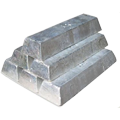
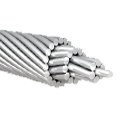
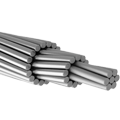
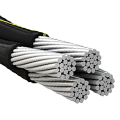
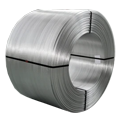
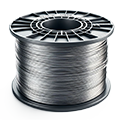








No comment